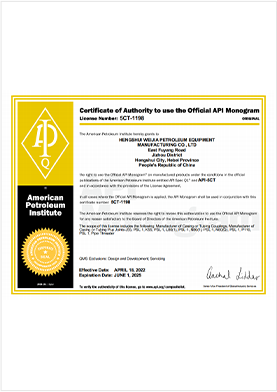- Afrikaans
- Albanian
- Amharic
- Arabic
- Armenian
- Azerbaijani
- Basque
- Belarusian
- Bengali
- Bosnian
- Bulgarian
- Catalan
- Cebuano
- Corsican
- Croatian
- Czech
- Danish
- Dutch
- English
- Esperanto
- Estonian
- Finnish
- French
- Frisian
- Galician
- Georgian
- German
- Greek
- Gujarati
- Haitian Creole
- hausa
- hawaiian
- Hebrew
- Hindi
- Miao
- Hungarian
- Icelandic
- igbo
- Indonesian
- irish
- Italian
- Japanese
- Javanese
- Kannada
- kazakh
- Khmer
- Rwandese
- Korean
- Kurdish
- Kyrgyz
- Lao
- Latin
- Latvian
- Lithuanian
- Luxembourgish
- Macedonian
- Malgashi
- Malay
- Malayalam
- Maltese
- Maori
- Marathi
- Mongolian
- Myanmar
- Nepali
- Norwegian
- Norwegian
- Occitan
- Pashto
- Persian
- Polish
- Portuguese
- Punjabi
- Romanian
- Russian
- Samoan
- Scottish Gaelic
- Serbian
- Sesotho
- Shona
- Sindhi
- Sinhala
- Slovak
- Slovenian
- Somali
- Spanish
- Sundanese
- Swahili
- Swedish
- Tagalog
- Tajik
- Tamil
- Tatar
- Telugu
- Thai
- Turkish
- Turkmen
- Ukrainian
- Urdu
- Uighur
- Uzbek
- Vietnamese
- Welsh
- Bantu
- Yiddish
- Yoruba
- Zulu
Understanding Bull Plug Pipe Fittings for Efficient Plumbing Solutions and Applications
Understanding Bull Plug Pipe Fittings A Comprehensive Overview
In the realm of plumbing and piping systems, various fittings play a crucial role in ensuring the efficiency and safety of fluid transport. Among these fittings, the bull plug is an essential component worth understanding. This article delves into the characteristics, applications, and benefits of bull plug pipe fittings, offering insights for professionals and DIY enthusiasts alike.
What is a Bull Plug?
A bull plug, often referred to as a blind plug, is a type of pipe fitting that is used to close the end of a pipe. It is typically cylindrical with an inside thread, allowing it to screw into the end of a pipe or fitting. The term bull in bull plug generally refers to its robust design and tapered profile, ensuring a secure and tight seal. Bull plugs are available in various sizes and materials, including brass, stainless steel, plastic, and carbon steel, providing versatility for different applications.
Key Features of Bull Plugs
1. Design and Structure The bull plug features a tapered design that allows it to fit snugly into the pipe. This tapering effect enhances the seal, minimizes the risk of leaks, and provides an optimal barrier against external contaminants.
2. Material Variety Depending on the specific application, bull plugs can be made from various materials. For instance, stainless steel plugs are ideal for high-pressure or corrosive environments, while plastic plugs are suitable for less demanding applications and are often used in residential plumbing.
3. Thread Types Bull plugs typically come with either tapered threads (NPT - National Pipe Tapered) or straight threads (BSP - British Standard Pipe). The choice of thread type often depends on the specific piping system and the requirements of the installation.
4. Pressure Ratings Bull plugs are designed to withstand specific pressure levels. When selecting a bull plug, it's crucial to consider the pressure rating, ensuring that the fitting can handle the demands of the system without risk of failure.
Applications of Bull Plugs
Bull plugs find application in a variety of settings, including
bull plug pipe fitting

- Industrial Systems In manufacturing and processing plants, bull plugs are often used to seal off unused pipe connections, preventing leakage and contamination of fluids.
- HVAC Systems In heating, ventilation, and air conditioning systems, bull plugs can be employed to close off air ducts or piping systems during maintenance or when sections are not in use.
- Hydraulic Equipment In hydraulic systems, bull plugs help seal tube ends and prevent fluid escape, ensuring that the system maintains pressure for effective operation
.- Residential Plumbing In home plumbing, bull plugs can be used to cap off unused pipes, making them essential during renovations or repairs to prevent water from leaking.
Benefits of Using Bull Plugs
1. Leak Prevention One of the primary advantages of using bull plugs is their ability to provide a leak-tight seal, which is crucial for maintaining system integrity and safety.
2. Versatility With various materials and sizes available, bull plugs can be utilized in multiple applications, making them a handy component in both industrial and residential settings.
3. Easy Installation Bull plugs are generally easy to install, requiring basic tools for screwing into place and ensuring a quick and straightforward sealing solution.
4. Cost-Effectiveness Given their durability and effectiveness, bull plugs represent a cost-effective solution for sealing pipes and preventing failures that could lead to costly repairs.
Conclusion
In summary, bull plug pipe fittings are indispensable components in various piping systems. Their robust design, versatility, and ability to prevent leaks make them a preferred choice for professionals across different industries. Understanding the function and proper application of bull plugs can lead to enhanced efficiency, safety, and reliability in fluid transport systems. As such, whether you are a seasoned plumber or a novice DIYer, integrating bull plugs into your piping solutions can undoubtedly contribute to the longevity and functionality of your system.
-
Tubing Pup Joints: Essential Components for Oil and Gas OperationsNewsJul.10,2025
-
Pup Joints: Essential Components for Reliable Drilling OperationsNewsJul.10,2025
-
Pipe Couplings: Connecting Your World EfficientlyNewsJul.10,2025
-
Mastering Oilfield Operations with Quality Tubing and CasingNewsJul.10,2025
-
High-Quality Casing Couplings for Every NeedNewsJul.10,2025
-
Boost Your Drilling Efficiency with Premium Crossover Tools & Seating NipplesNewsJul.10,2025







